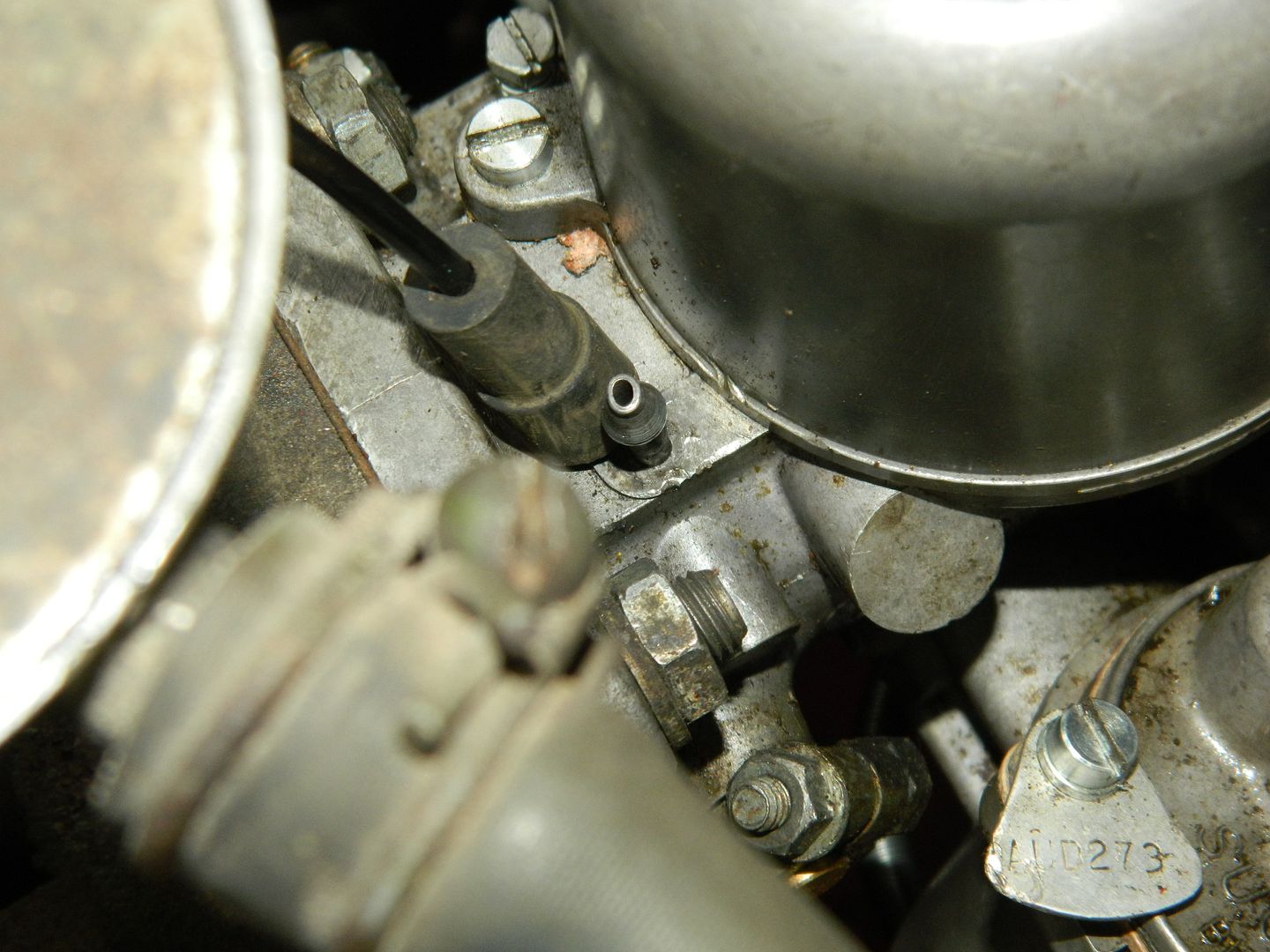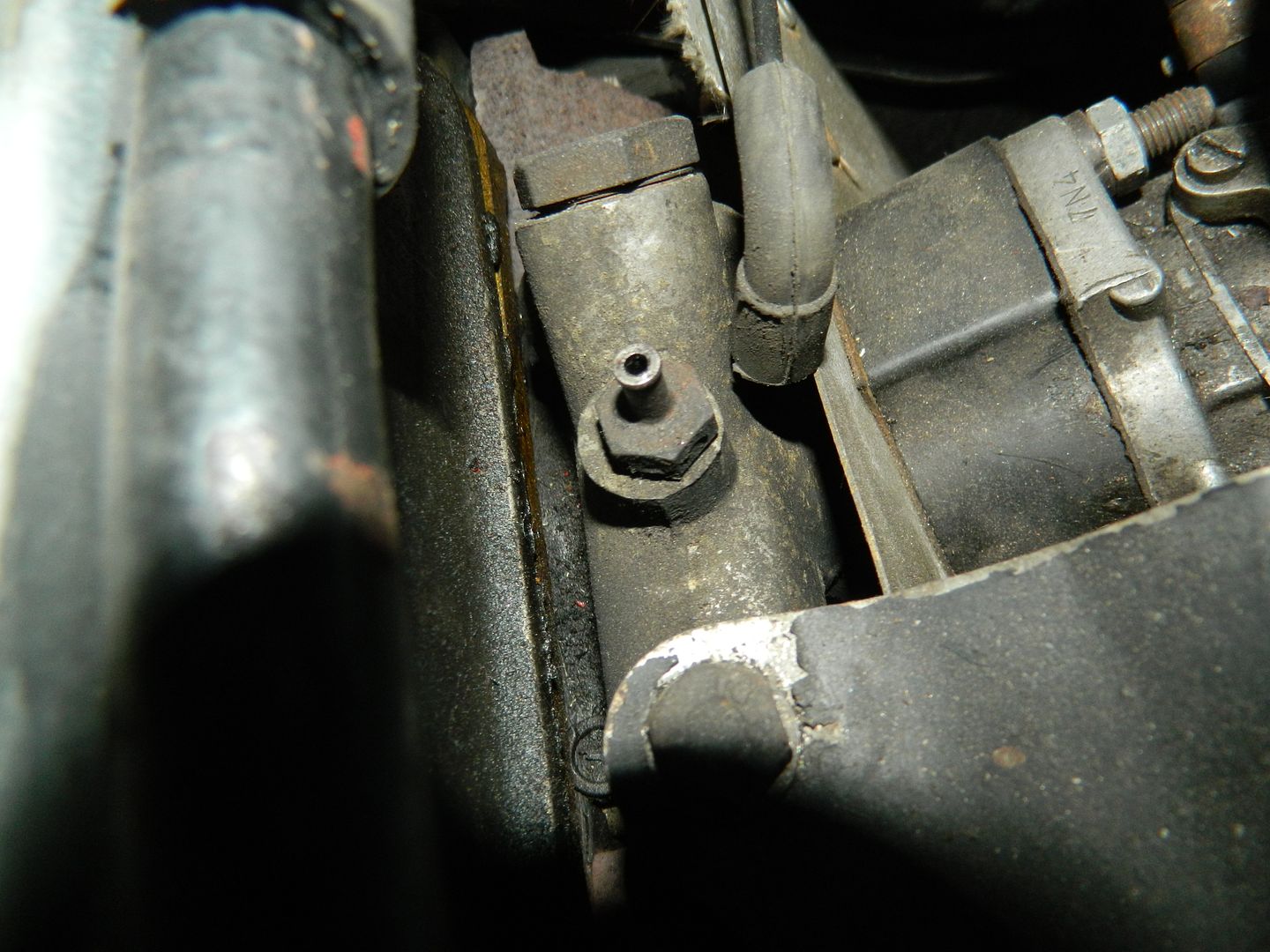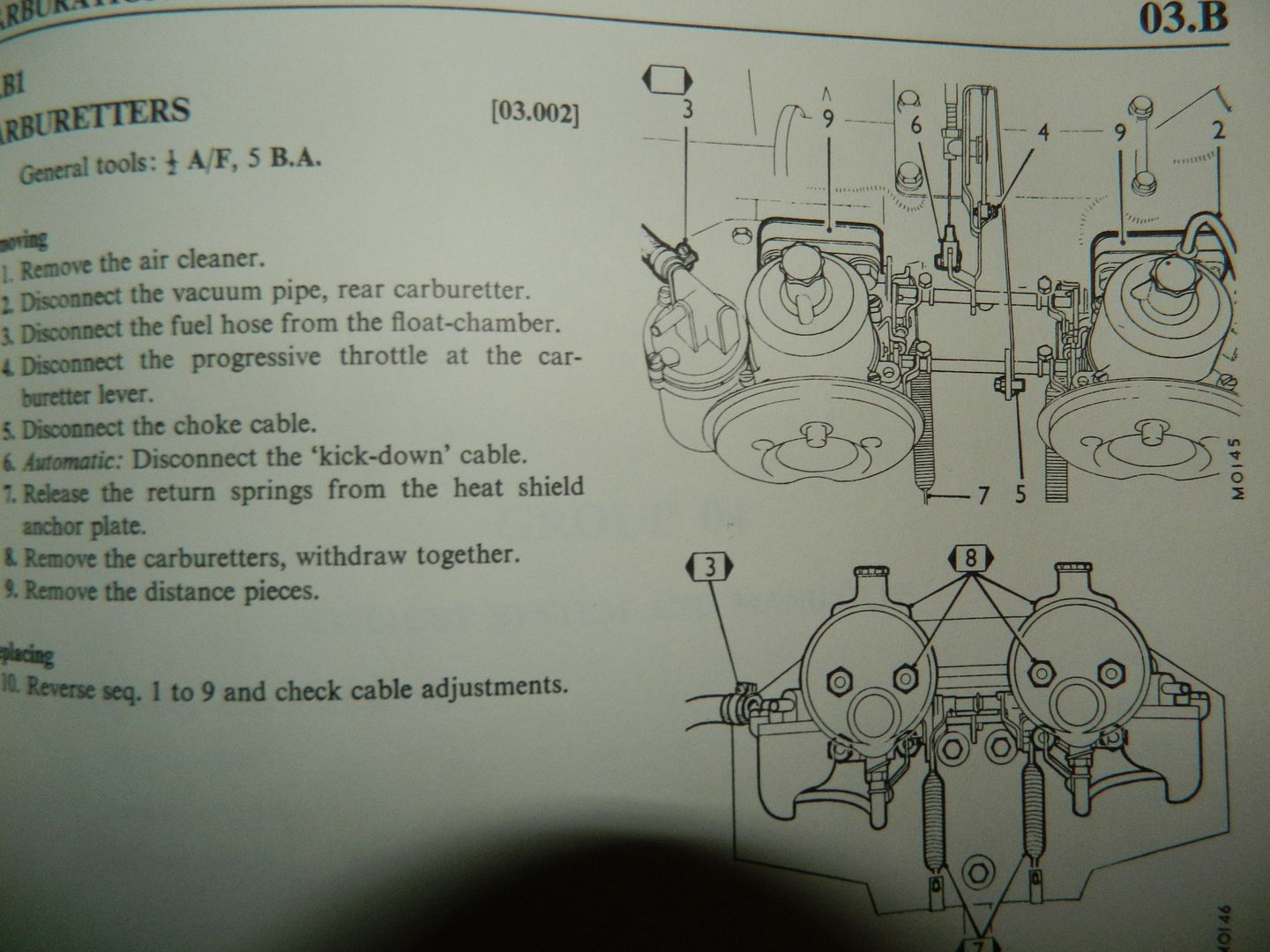|
|
Post by mikey405 on Jul 23, 2015 18:30:27 GMT
Evening everyone.
After having fitted the newly overhauled 25D6 from The Distributor Doctor (who I can highly recommend BTW) on my 3-Litre, I wanted to get the ignition set up just right. When I went to check the vacuum advance however, it turned out that the metal pipe connecting the distributor to the manifold was not connected to anything! It had its little 90 degree rubbery bit on it but it was just sat on top of the manifold where underneath used to be the nipple for the vacuum take-off. What has replaced the nipple I know not - It just looks like a snapped-off (flush) self-tapper or something like that. I will try drilling it out when the time comes but I have nothing to replace it with and I was wondering whether anyone had any thoughts on what this piece might be called or where I might start to look. (I suppose I could ask The Distributor Doctor chap, but I thought I'd have a bit of a search around on the Interweb first.)
Thanks all.
Kind regards.
From Mike.
|
|
|
|
Post by Penguin45 on Jul 23, 2015 19:52:02 GMT
Have a couple of pics.  Vacuum take-off on the Austin 1800. It's a tube drilled into the carburettor body - probably not much use to you.  Vacuum take-off on the Wolseley manifold. This has a pair of HIF4s on an MGB inlet. That fitting is 12H 357 and appears to be amazingly obsolete. Perhaps a similar fitting as used in industrial hydraulics, compressors or vacuum systems could be adapted. It would only be a matter of drilling and tapping a hole. Chris. |
|
|
|
Post by dave1800 on Jul 24, 2015 0:53:24 GMT
First you need to check from the w/s manual if your vacuum take off should be ported (ie from the carb on the air cleaner side of the throttle disc so it only operates when the throttle is opened and is closed off at idle), or from the manifold giving maximum vacuum and hence vacuum advance at idle. If the latter then you can tap the manifold or the plastic carb heat spacer and use an adapter that comes with the good old vacuum guages or something similar. If it is ported you will need to fit a take off from the carb as shown in Chris' photos.
If you connect the vacuum pipe to the manifold when it should be ported the car may be difficult to start and low down driveability will be poor. Once the throttle is opened more than about 15-20 degrees both systems work the same but the distributors will have different advance rates at lower rpm. The MGB used both systems over the years, the manifold take off to meet emissions but the feedback is that the ported makes for smoother driving.
Regards
David
|
|
|
|
Post by dave1800 on Jul 24, 2015 1:01:23 GMT
Hi Chris See my note to Mike about ported vs manifold vacuum. I'm unclear whether your distributor mechanical advance is matched to your manifold vacuum advance option with the HIFs? David  Vacuum take-off on the Wolseley manifold. This has a pair of HIF4s on an MGB inlet. That fitting is 12H 357 and appears to be amazingly obsolete. Perhaps a similar fitting as used in industrial hydraulics, compressors or vacuum systems could be adapted. It would only be a matter of drilling and tapping a hole. Chris. |
|
|
|
Post by tommydp on Jul 24, 2015 8:20:38 GMT
I suppose the 3 litre has ported vacuum take off, from the carb body. As far as I know, only later BL cars used manifold vacuum for the vacuum advance due to emission regulations. I've only heard about this on late MGBs and Princess 1800s sold in Sweden. So called de-smogged engines. Older engines, like the 1800 and 3 litre, should have ported vacuum take off. I stand to be corrected though.
I'm also curious about Chris' take off on the Wolseley. Shouldn't it have ported vacuum too? To me this sure looks like a take off someone plugged in for a permanent vacuum gauge, which is very handy btw (Thanks Dave!).
I'm not into HIFs but on the 2200 Princess I helped out a guy with, which has twin HIFs, the vacuum take off was indeed on the underside of the right carb. I'm pretty sure about this, cause I noticed someone had connected one of the carb overflow pipes to the vacuum advnce (!). I looked it up in a Princess manual and found out the advance should be connected to the take off on the underside of the carb, which I showed the owner and corrected.
Tommy
|
|
|
|
Post by Penguin45 on Jul 24, 2015 12:51:00 GMT
Aha! Forgot I had the manual for this one.  Take off from the rear carburettor. The Wolseley has had the twin carb set-up on for over ten years now, so I'll be leaving it strictly alone, especially in view of the absence of any vacuum take-off on the carb bodies. Chris. |
|
|
|
Post by dave1800 on Jul 24, 2015 13:45:25 GMT
Knowing how much you enjoy distributors and ignition timing leaving it alone may be a good idea  . As you appear to be using manifold vacuum if I have interpreted your photos correctly I'm just curious what your ignition settings are at idle with the vacuum pipe connected and disconnected. Given that the manifold vacuum is probably around 18-20" HG at idle the vacuum advance could be anywhere from 12 degrees Mk11 distributor to 16 or 20 degrees with a Mk1 distributor. The ported vacuum should be zero advance at idle. Regards David Aha! Forgot I had the manual for this one. The Wolseley has had the twin carb set-up on for over ten years now, so I'll be leaving it strictly alone, especially in view of the absence of any vacuum take-off on the carb bodies. Chris. |
|
|
|
Post by mikey405 on Jul 24, 2015 16:44:43 GMT
Hi all. The 3-Litres originally had a vacuum take-off connection to the rear carburetter (Which looked exactly like Chris's diagram above) but this was moved to the centre of the inlet manifold because it was found that the cars were overheating at idle. GAN21J has had this modification as the original nipple has been closed off and what I assume may well once have been a nipple has been installed in the inlet manifold but then for some reason removed and replaced with a screw (or whatever ot is). I spoke to a pal of mine in Exmouth who makes miniature steam-engines and he said it should be a simple job to drill out and install a new nipple in the manifold. Thanks everyone for the ideas though. (Especially Chris for the pictures etc.) Kind regards. From Mike.   |
|
|
|
Post by Penguin45 on Jul 25, 2015 0:00:08 GMT
The diagram is from the 3 Litre WM. I bought it because it was a bargain and I do hanker after one.
I was curious to hear about the repositioning of the take-off, especially in view of David's comments regarding the change in vacuum applied to the advance mechanism by moving from the carburettor to the inlet manifold. I assume in the case of the 3 Litre it couldn't have made all that much difference, because the carbs weren't changed or modified as far as I can tell.
The strange world of BMC cars....
Chris.
|
|
|
|
Post by dave1800 on Jul 25, 2015 1:26:06 GMT
Strange indeed. By having the vacuum advance at idle and when cranking it puts more load on the starter and is cited as one of the causes of later US MGBs being difficut to start, although with the myriad of changes introduced there to meet emission regs it is difficult to disentangle. Just try advancing your distributor 20 degrees and note how the starter struggles to turn the engine to see the effect. At idle by applying the full vacuum advance the rpm will increase considerably - try sucking on the vacuum pipe on a ported system such as on the Crab (not Chris's Wolseley  )to see this. Bringing the idle rpm back to spec by adjusting the throttle screw reduces the amount of air and fuel being taken in and this in combination with more advance makes the engine run cooler. The disadavantages appear to be a less smooth take up and with hotter cams the manifold pulsing can make the timing jitter and lead to a rough idle. It looks as though the 3 Litre mod was a cheap solution to the overheating problem and the 6 cylinder may not be so sensitive to the effects. From what I can ascertain from MGB data the change from ported to manifold vacuum advance correlates with changes to the springs in the distributor ie mechanical advance and the vacuum unit diaphragm specs and not to the carb - other than removing the vacuum take off. David The diagram is from the 3 Litre WM. I bought it because it was a bargain and I do hanker after one. I was curious to hear about the repositioning of the take-off, especially in view of David's comments regarding the change in vacuum applied to the advance mechanism by moving from the carburettor to the inlet manifold. I assume in the case of the 3 Litre it couldn't have made all that much difference, because the carbs weren't changed or modified as far as I can tell. The strange world of BMC cars.... Chris. |
|
|
|
Post by threelitre on Jul 26, 2015 21:19:10 GMT
This was asddressed in a letter to the dealers requesting them to make the modification when the customer comes in. My LHD one has not this mod (and runs very happily), but my red one (one of the last ones) uses manifold vacuum...
Regards,
Alexander
|
|







 .
.